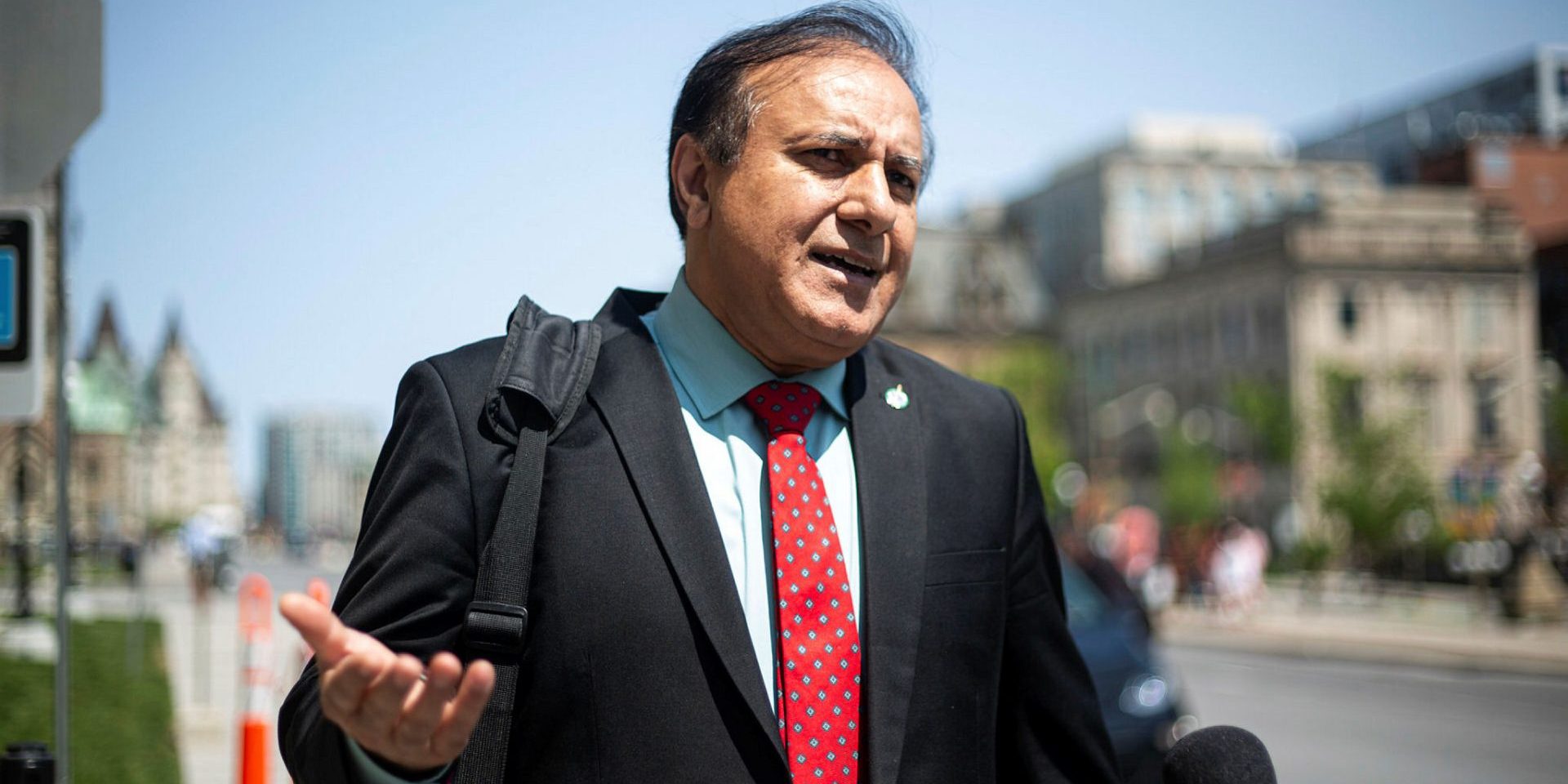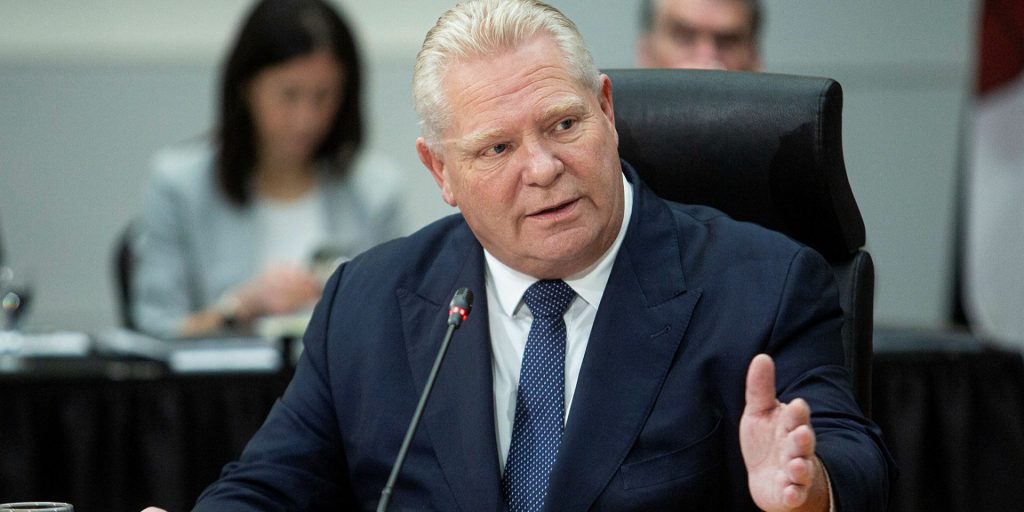Post-pandemic uptick in public servant sick days making the case for remote work, say unions

Sick days have been on the rise across every federal department and agency in the core public service since the COVID-19 pandemic, with one-third reporting at least a 10-per-cent uptick in the average number of days taken, according to the most recently available data.
Sick days were significantly lower in 2020-21, when federal employees were largely working from home in the midst of public health lockdowns, compared to 2023-24, the latest fiscal year for which the Treasury Board Secretariat (TBS) has tracked the numbers.
On average, bureaucrats across the 70 organizations took 5.9 sick days in 2020-21 when most offices were closed, compared to 9.6 days the year prior. The averages have steadily climbed every year since, with public servants off sick an average of 8.1 days in 2021-22, followed by 8.8 days the following year, and rising to 9.2 days in 2023-24.
Federal staff slowly began returning to in-person work in 2022, and by early 2023 were ordered to work in-office for at least two to three days a week. Data for the 2024-25 fiscal year, when federal public servants were mandated to work in-office at least three times per week, is not yet available, TBS said.
It’s a trend that union leaders say shows that productivity increases when employees have the flexibility to work when and where they want.
The data tracks sick days taken within the core administration of the federal civil service, which includes government departments and agencies under TBS’s authority. The core public administration has 279,396 employees, as of Jan. 1, 2025. Between 2020 and 2021, the number of staff in this category increased six per cent from 231,176 employees to 245,739 amid broader year-over-year growth since 2015.
During the pandemic, Natural Resources Canada’s 4,375 employees, for example, took an average of 4.2 sick days per year. That number grew by 54 per cent by 2023-24, with the 5,544 staffers on average taking 6.5 annual sick days, but remains lower than before the pandemic, when employees on average took about seven days off for illness.
Sick days are about 25-per-cent higher among employees at Fisheries and Oceans Canada than they were during the pandemic, when its 13,170 staff members took an average of 7.4 sick days.
At Public Safety Canada, too, sick days are about 64 per cent higher in this time frame, when the 4.9 sick days average among 1,181 employees rose to an average of eight days for the 1,690 staff.
The data shows that, on average, across the core public administration, sick days remain lower than before the pandemic, with the average public servant taking approximately one fewer sick days per year in 2023-24 compared to 2017-18.
TBS department spokesperson Martin Potvin said, depending on collective agreement or terms and conditions of employment, and “individual circumstances,” staff could accrue up to 15 days of sick leave per year. The averages also include employees using banked sick leave.
Remote work an ‘obvious solution,’ says union head

Sean O’Reilly, president of Professional Institute of the Public Service of Canada (PIPSC), which represents thousands of federal public servants including scientists, engineers, architects and more, said the sick-day data shows “productivity only increases” when employees have the flexibility to work when and where they want.
“I’ll always advocate that people should take care of themselves, and use sick days when they’re necessary,” he said, “but it gives folks that flexibility.”
As of September 2024, most federal staff were mandated to work in-office at least three days per week, with executives working from the office four days per week. Canada’s public-sector unions have argued that working in-person doesn’t equate to higher productivity ever since TBS mandated its employees back into offices.
Federal employees are commuting into offices to “sit on [Microsoft] Teams meetings all day,” which are virtual, O’Reilly said.
“What I’ve seen is members going to an office which is not ready for them, and basically sitting in front of a computer screen, which is an absolute waste of time and taxpayer money,” O’Reilly said.
“Is that really a good use of taxpayer money, to have people sitting in offices when they could be sitting somewhere else?”
Nathan Prier is president of Canadian Association of Professional Employees, another union representing federal public servants. He said returning to offices involves employees taking lengthy commutes into a stressful work environment, citing the ongoing Phoenix pay system saga, looming job cuts, and “just a generally toxic work environment,” he said.
“People are obviously going to start tapping out in higher numbers.”
Couple that with long commutes and open-concept offices with poor ventilation, “people are getting sick on the way to work, or at work itself,” he added.

Prier said that, pre-pandemic, the public service was generally rigid in not allowing people to work from home when they were mildly unwell, but during the pandemic, when people were encouraged to stay home to quell the spread of the COVID-19 virus and other illnesses, “people could work from home in those situations,” he said, describing it as an unexpected productivity gain.
“The solution has been there for years at this point, and we need to be way more flexible with remote work rights,” he said. “It’s such low-hanging fruit, it’s an obvious solution.”
While public servants working for the province of Ontario and City of Ottawa are being mandated back to work in office full-time, the federal public service is tight-lipped about the future of work for hundreds of thousands of staff.
Ford presses feds to send bureaucrats back to the office
When asked if the federal government is considering changing its current hybrid mandate, TBS spokesperson Barb Couperus said the current hybrid work model, “which is driven by a commitment to most effectively serve Canadians,” has not changed as of Sept. 4.
In mid-August, Ontario Premier Doug Ford ordered the province’s 60,000 public servants back to office four days per week beginning this fall, and in-office full-time as of January 2026. The current policy, with provincial employees mandated to work in-office three times per week, has been in place since April 2022.

Ford told reporters he believes in-office work is important for productivity and mentorship, and said the federal government should enforce the same mandate.
“How do you mentor someone over a phone? You can’t. You’ve got to look at them eye to eye,” Ford said during an unrelated news conference in mid-August.
Ford also said foot traffic from office workers is important for small businesses, something Ottawa Mayor Mark Sutcliffe also celebrated when federal employees, many of whom work in Ottawa’s beleaguered downtown, were mandated back to the office last fall.
Ottawa’s municipal employees, too, are expected to work full-time in office beginning next January, a move seemingly in lockstep with the Ontario government’s announcement. A memo to Sutcliffe and city council said over 85 per cent of city staff are already on-site each day.
The memo from city manager Wendy Stephanson said the move “will help strengthen the organizational culture,” and “build confidence and trust in the city’s ability to continue to provide responsive and reliable service to the public.”
PIPSC president O’Reilly said a full-time return to office for federal staff isn’t being discussed between unions and TBS currently, “but definitely, we’re always concerned they’re going to increase the number of days in-office,” he said in a recent interview.
“I hope the Government of Canada is looking at the studies I’m looking at that shows productivity was better during the pandemic.”

He said Ontario and the City of Ottawa don’t seem to have a solid rationale for why workers are coming back into the office full-time, and “it sounds like it was political pressure,” he said.
The current three-day mandate is “imperfect,” he said, “but it is working.”
Sharon DeSousa, president of the Public Service Alliance of Canada, one of the largest unions for civil servants, said remote work is the future of work.
“The data is clear: It improves work-life balance, boosts productivity, attracts top talent and saves taxpayer money,” she said via email.
“Since the pandemic, public service workers have proven they can deliver high-quality services to people nationwide while maintaining a healthy work-life balance.”
“Ford’s regressive stance on the future of work is just out of touch. It ignores the many benefits of remote work not only for workers, but for the people who depend on the public services they deliver.”
mglass@hilltimes.com
The Hill Times






 LICENSING
LICENSING PODCAST
PODCAST ALERTS
ALERTS













